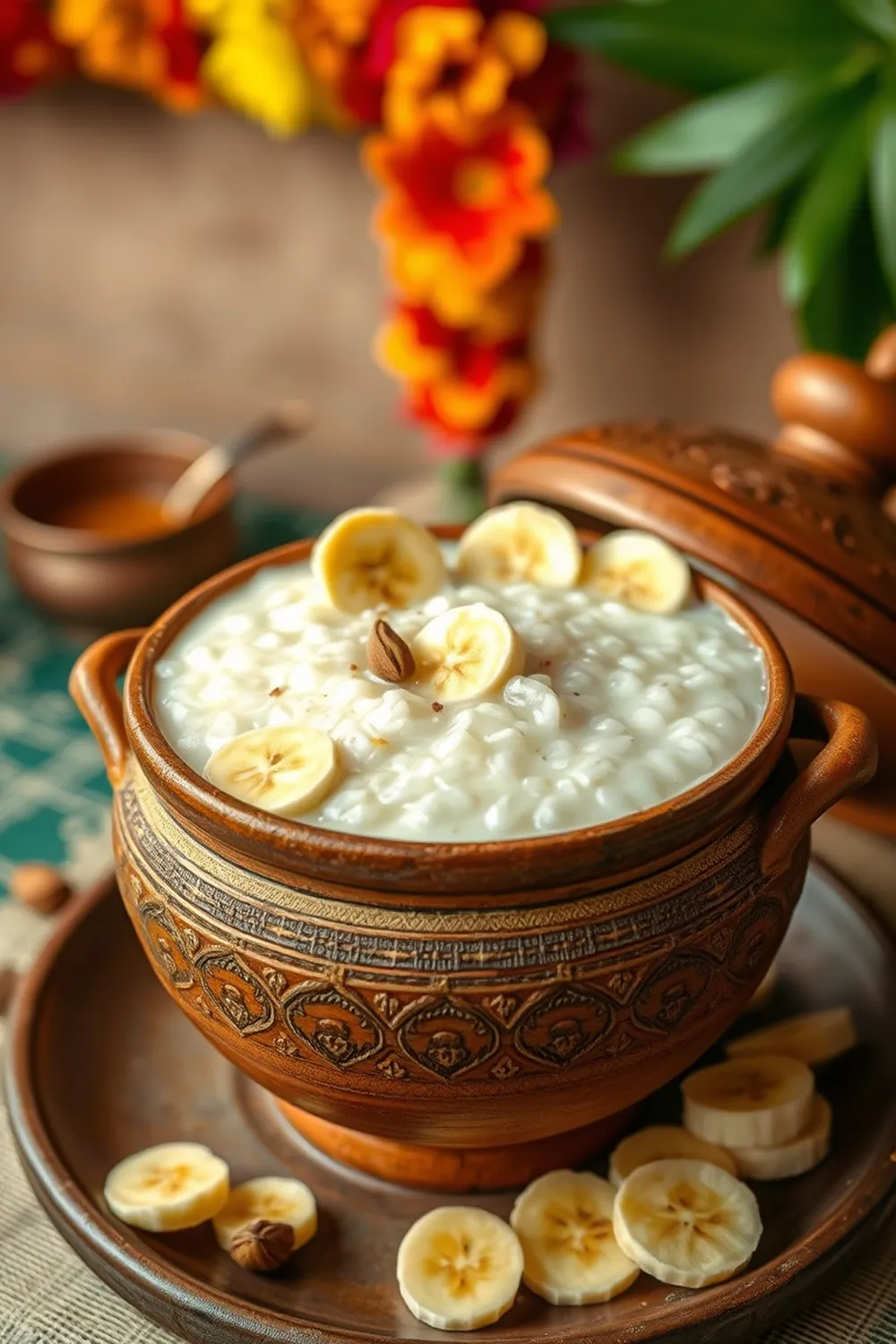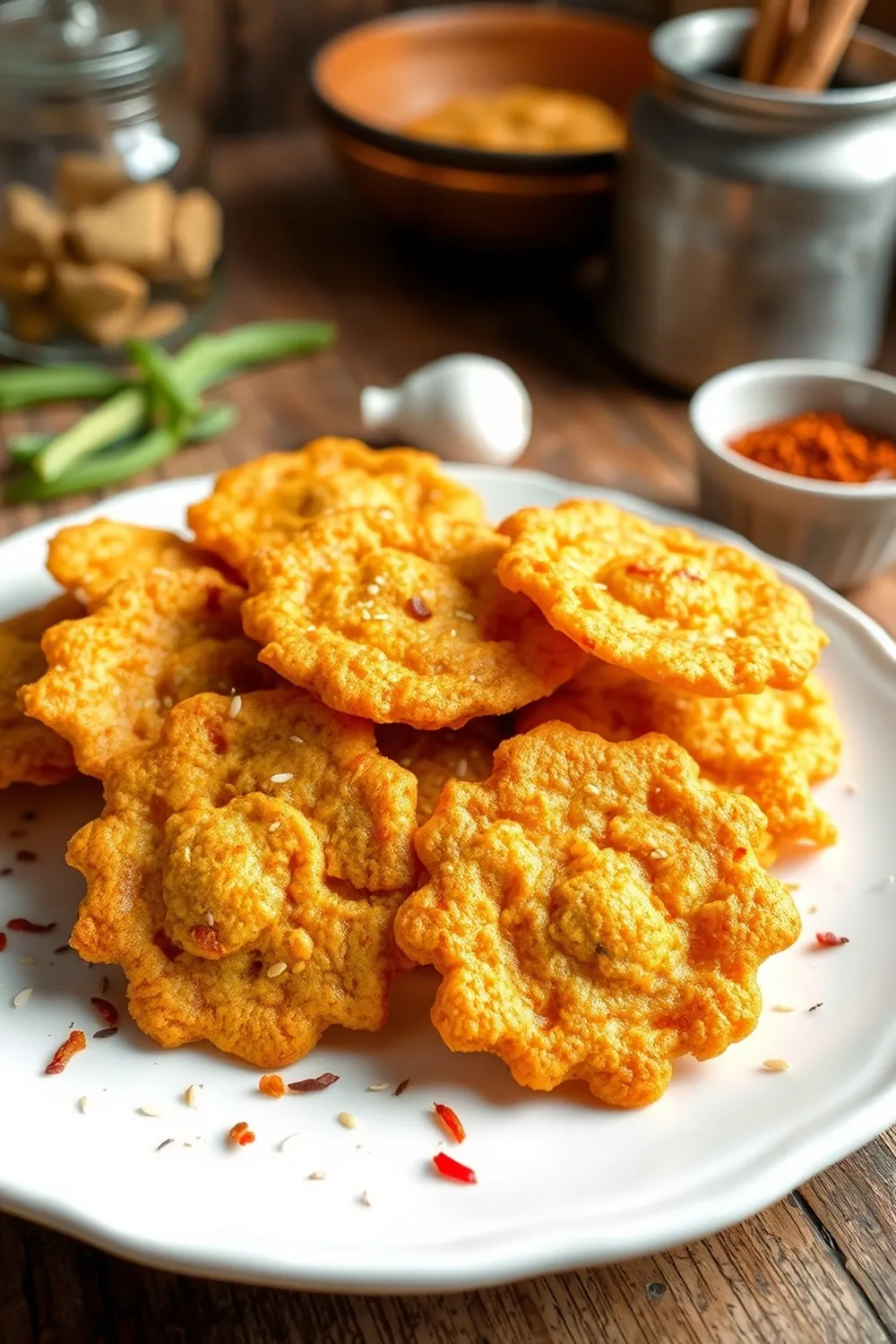- Dry roast moong dal in a pressure cooker for 1-2 minutes, or until lightly golden. Add 3 cups of water and cook until very soft and mushy (about 3-4 whistles). Mash or grind into a smooth paste.
- Heat oil in a kadai (or heavy-bottomed pan). Fry cashews until golden brown and remove. Add wheat flour and maida to the same kadai and roast on medium heat until fragrant (about 5-7 minutes), stirring constantly to prevent burning.
- Mix the cooked dal paste into the flour mixture. Add sugar, cardamom powder, and food color (if using). Stir continuously over medium heat until the mixture starts to thicken.
- Gradually add oil and ghee, stirring continuously until the halwa turns glossy and the ghee starts to release from the sides. Continue stirring to prevent sticking.
- Cook until the mixture leaves the sides of the pan and becomes non-sticky. Serve warm, optionally with a side of South Indian mixture.
- Calories:350 kcal25%
- Energy:1464 kJ22%
- Protein:5 g28%
- Carbohydrates:45 mg40%
- Sugar:30 mg8%
- Salt:10 g25%
- Fat:18 g20%
Last Updated on 4 months by Neha Deshmukh
Moong Dal Halwa Recipe – Authentic Indian Sweet with Wheat Flour & Ghee
Introduction
Oh, halwa! Just the word conjures up images of festive gatherings and cozy winter evenings, doesn’t it? This Moong Dal Halwa is a classic Indian sweet, and honestly, it’s one I’ve been perfecting for years. I first made this for Diwali, and it was a hit – my family still asks for it every year! It’s a little bit of effort, but trust me, the rich, warm, and subtly sweet flavor is absolutely worth it. This recipe uses a blend of wheat flour and maida for a beautiful texture, and plenty of ghee (because, well, it’s halwa!). Let’s get cooking!
Why You’ll Love This Recipe
This Moong Dal Halwa isn’t just delicious; it’s comforting. It’s the kind of dessert that feels like a warm hug. Here’s what makes it special:
- Authentic Flavor: This recipe stays true to traditional Indian flavors, with cardamom and a hint of color.
- Perfect Texture: The combination of moong dal, wheat flour, and maida creates a wonderfully smooth and slightly grainy texture.
- Rich & Decadent: Ghee is key! It gives the halwa its signature richness and glossy sheen.
- Festive Treat: Perfect for celebrations like Diwali, Holi, or any special occasion.
Ingredients
Here’s what you’ll need to make this delightful Moong Dal Halwa:
- ½ cup yellow moong dal (approx. 100g)
- ¼ cup wheat flour (approx. 30g)
- 1 tbsp maida/all-purpose flour (approx. 8g)
- 3 cups water (720ml)
- 1 cup sugar (approx. 200g)
- ½ cup cooking oil (approx. 120ml)
- ½ cup melted ghee (approx. 115g)
- ½ tsp cardamom powder (approx. 2.5g)
- 5 cashew nuts
- 2 pinches red food color (optional)
Ingredient Notes
Let’s talk ingredients! A few tips to ensure your halwa turns out perfectly:
Yellow Moong Dal: Type and Soaking (if any)
We’re using split yellow moong dal (pesal). No need to soak it! It cooks down beautifully and quickly.
Wheat Flour & Maida: The Blend for Texture
The wheat flour adds a lovely nutty flavor and a bit of texture, while the maida helps bind everything together and creates a smoother consistency. You can adjust the ratio slightly to your preference – more wheat flour for a coarser texture, more maida for a smoother one.
Ghee: Importance of Quality & Quantity
Ghee is essential for that authentic halwa flavor and texture. Don’t skimp on the quality! Homemade is best, but good quality store-bought ghee works too. The ghee not only adds flavor but also helps the halwa release from the pan as it cooks.
Cardamom Powder: Freshness & Aroma
Freshly ground cardamom powder is a game-changer. The aroma is incredible! If you can, grind your own from cardamom pods.
Cashew Nuts: Regional Variations & Substitutions
Cashews add a nice crunch. Some families also add almonds or pistachios. Feel free to experiment! You can also skip the nuts altogether if you prefer.
Step-By-Step Instructions
Alright, let’s make some halwa!
- Cook the Moong Dal: Dry roast the moong dal in a pressure cooker for about a minute. This helps remove any moisture and enhances the flavor. Add 3 cups of water and cook until the dal is completely mushy – usually 2-3 whistles on medium heat. Once cooled slightly, mash or grind the dal into a smooth paste.
- Roast the Flour: Heat the oil in a kadai (or a deep, heavy-bottomed pan) over medium heat. Add the cashew nuts and fry until golden brown. Remove and set aside. Now, add the wheat flour and maida to the same oil. Roast, stirring constantly, until the flour is fragrant and lightly golden – about 5-7 minutes. Be careful not to burn it!
- Combine & Cook: Pour the cooked moong dal paste into the roasted flour mixture. Add the sugar, cardamom powder, and food color (if using). Stir continuously until everything is well combined and the mixture starts to thicken.
- The Ghee Magic: This is where the patience comes in! Gradually add the melted ghee and cooking oil, a little at a time, stirring constantly. The halwa will initially seem like it’s absorbing all the ghee, but keep going! As you continue to stir, the halwa will start to become glossy and release the ghee.
- Final Touches: Continue cooking and stirring until the halwa leaves the sides of the pan and becomes non-sticky – this can take another 10-15 minutes. Garnish with the fried cashews. Serve warm with a side of South Indian mixture for a delightful contrast of flavors and textures.
Expert Tips
Here are a few secrets to halwa success:
Achieving the Perfect Halwa Texture
The key is continuous stirring! This prevents sticking and ensures even cooking. You want a smooth, slightly grainy texture – not too dry, not too sticky.
Preventing Sticking & Burning
A heavy-bottomed kadai is your best friend. And remember, low to medium heat and constant stirring are crucial.
Roasting Techniques for Optimal Flavor
Don’t rush the roasting process. Roasting the flour properly develops its flavor and prevents a raw taste in the final halwa.
Variations
Want to put your own spin on things? Here are a few ideas:
Vegan Moong Dal Halwa Adaptation
Substitute the ghee with an equal amount of coconut oil or vegan butter. It won’t have quite the same flavor, but it will still be delicious!
Gluten-Free Moong Dal Halwa Adaptation (Alternative Flours)
Replace the wheat flour and maida with an equal amount of gluten-free flour blend. Rice flour or almond flour work well.
Spice Level Adjustment (Saffron & Nutmeg)
Add a pinch of saffron strands soaked in warm milk for a beautiful color and aroma. A tiny grating of nutmeg also adds a lovely warmth.
Festival Adaptations (Holi, Diwali)
For Diwali, I like to add a few silver varak (edible silver leaf) for a festive touch. During Holi, a sprinkle of chopped pistachios adds a vibrant green color.
Serving Suggestions
This halwa is best served warm. It’s delicious on its own, but even better with:
- A side of South Indian mixture (a savory snack mix)
- A scoop of vanilla ice cream (a modern twist!)
- A warm glass of milk
Storage Instructions
Leftover halwa can be stored in an airtight container in the refrigerator for up to 3-4 days. Reheat gently on the stovetop or in the microwave before serving.
FAQs
Let’s answer some common questions:
What is the best type of moong dal to use for halwa?
Split yellow moong dal (pesal) is the best choice. It cooks quickly and easily.
Can I make this halwa ahead of time?
You can cook the moong dal paste ahead of time and store it in the refrigerator for a day or two. But the halwa itself is best made fresh.
How do I prevent the halwa from becoming too dry?
The key is to add the ghee gradually and stir continuously. If it starts to look dry, add a tablespoon or two of warm milk.
What can I substitute for ghee in this recipe?
Coconut oil or vegan butter can be used as a substitute, but the flavor will be different.
Is it possible to make a smaller batch of this halwa?
Absolutely! You can easily halve or quarter the recipe. Just adjust the cooking time accordingly.










